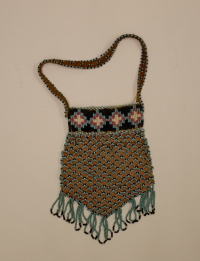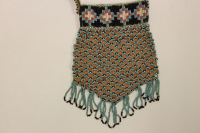Bag
Bag
Bag
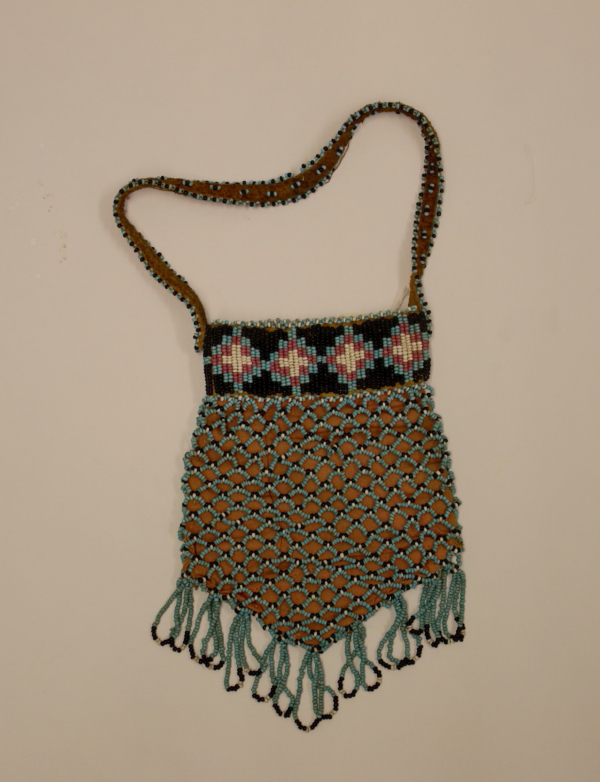
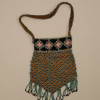
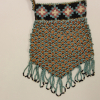
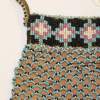
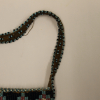
Opaque and semi-translucent beads sewn to create a mesh pattern, Beaded tanned hide neck and handle, Beaded looped bottom, Pink cloth lining, snap closure.
attributed on the basis of catalogue records which also identifies a Saulteaux Cultural type
Condensed from the catalogue records.
Read More About This Relative
Beads, thread, tanned hide, metal clasp
Open mesh bag, sides slope outward with pointed bottom tip and straight top edge, Opaque and semi-translucent beads are worked together in an open lace-stitch technique to create a lattice (small diamond) pattern, Overall colour is light blue with black and white at diamond points, Beadwork done with cotton thread, Smoked tanned hide strip sewn to top edge for neck, Covered on both sides with beads in a geometric design applied with spot-stitch technique, design is a row of white, pink, light blue checkerboard diamonds on black background, Opening has loop stitch edging of light blue and white beads, Along bottom of bag are beaded loops of light blue with black and white, Handle is a long smoked tanned hide strip, each end is sewn to outer side of neck band, along centre of handle are black and light blue beads placed in groups of three, along both edges of handle is loop stitch edging of black and light blue beads, Pink cloth lining can be seen from outside of bag, Metal snap closure sewn to lining at opening.
Opaque and semi-translucent beads are worked together in an open lace-stitch technique to create a small diamond pattern, Beaded design on neck is a row of white, pink, light blue checkerboard diamonds on black background
personal accessory
Areas of missing beads; hide dirty; cloth faded
Provenance
Nathaniel Murdock William John McKenzie was born on Dec. 5, 1857 in Stromness, Orkney Islands. He took a contract with the HBC in 1876 as a carpenter serving at Fort Ellice in Southwestern Manitoba. He rose through the ranks from this position to Post Manager, Clerk in Charge, Clerk and Trader, and finally District Manager for the Lake Huron and Lake Superior regions. He retired briefly June 1, 1893 and then returned into the service until 1914. During his employment, he worked in Manitoba, Saskatchewan and in the northern Great Lakes region.
About This GRASAC Record
Manitoba Museum













Attributed to the Plains Geo-Cultural area.
 Knowledge Sharing Platform
Knowledge Sharing Platform

